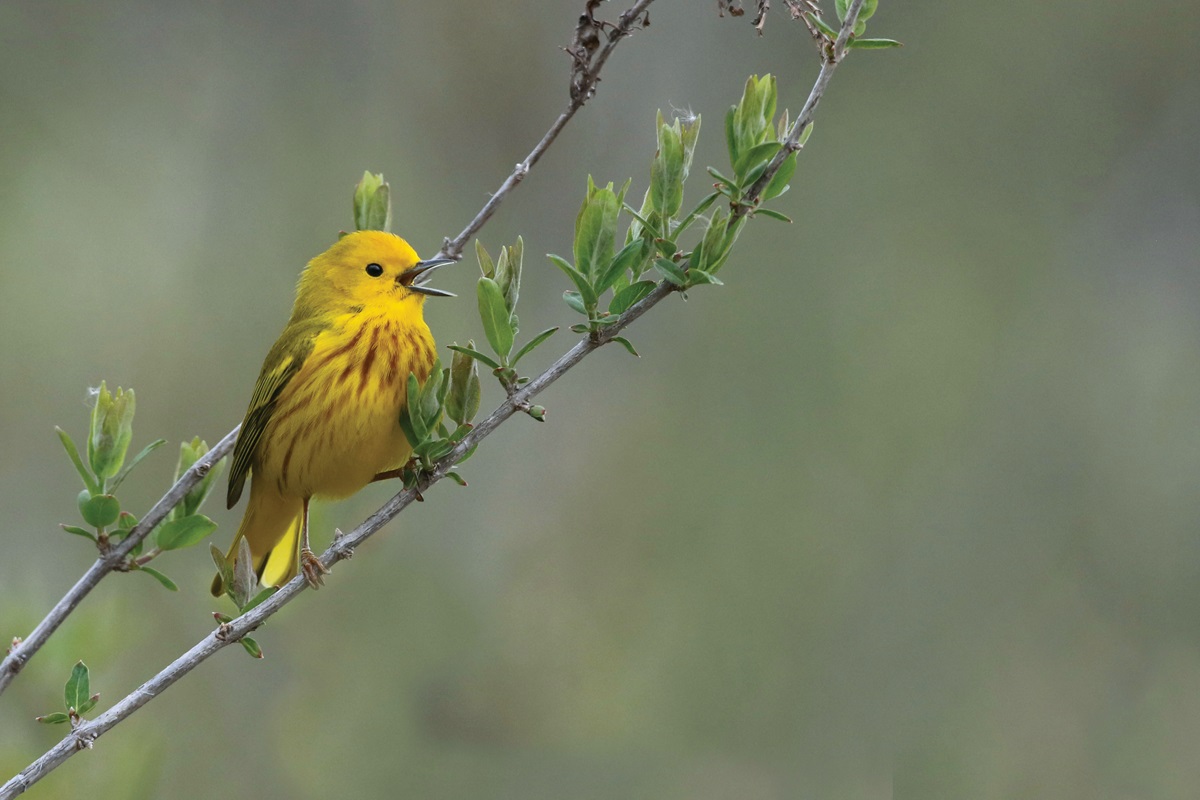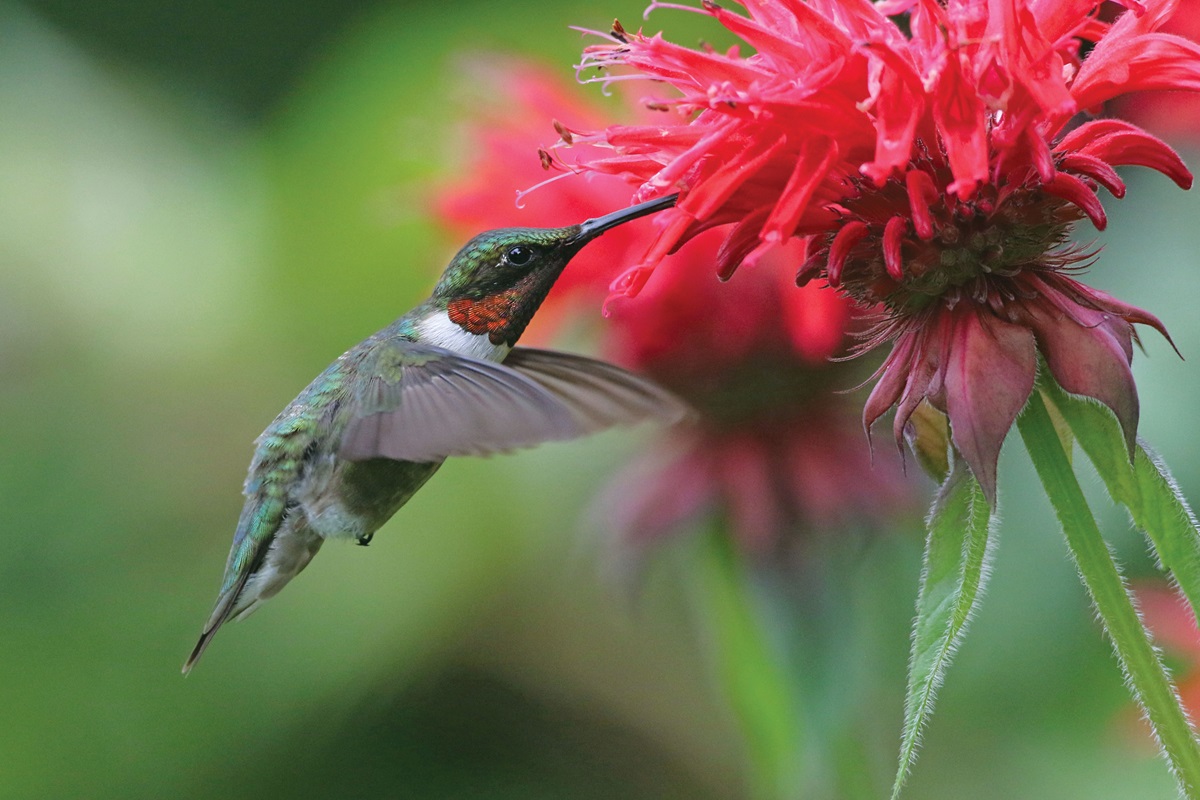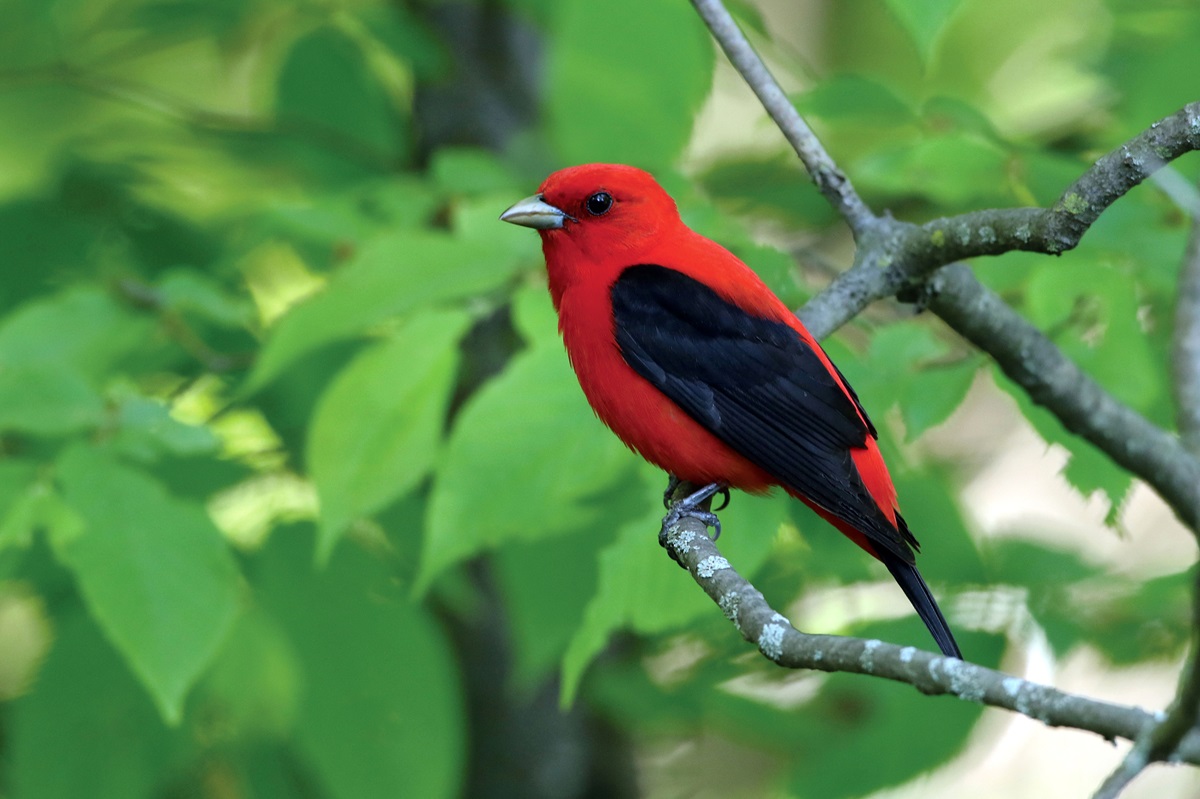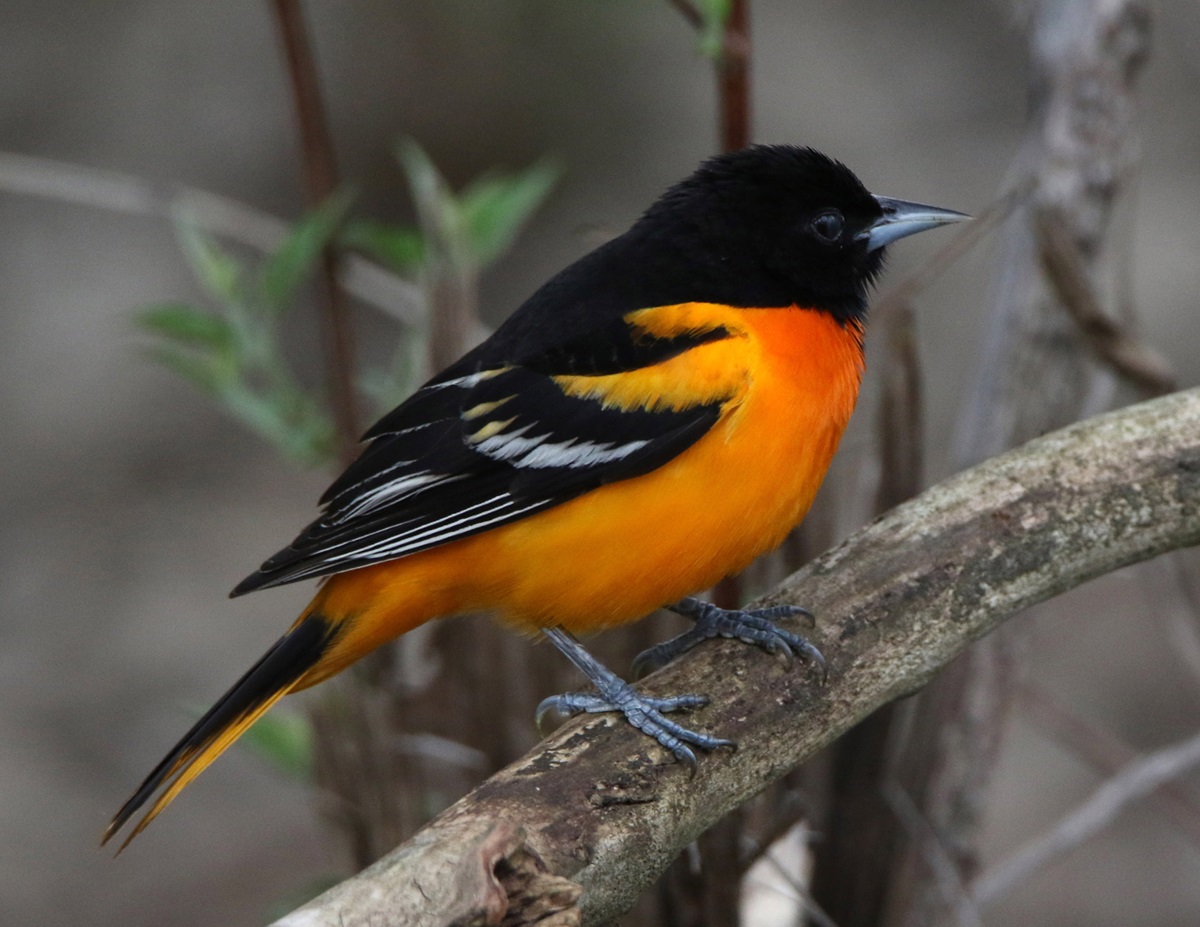By Brian Morin
Spring fills us with emotion as we welcome seasonal changes. The sights, sounds and smells offer a rich bouquet of sensory delights with longer days enabling us to take full advantage of nature’s abundance.

We have exchanged the monochrome winter landscape for a bevy of colours that begin on the ground but quickly take to the air. Spring wildflowers and flowering trees are accompanied by insects that our songbirds require for both themselves and for their chicks. It is the presence of insects that enables a host of winged beauties to breed in our northern climate and explains why we don’t see them until we experience an explosion of flying and crawling bugs.
Among the avian families, it is songbirds that present the strongest assortment of colours. The scarlet tanager’s blood-red body and black wings are striking to say the least. This beauty spends its time high in the forest canopy and for all its brilliance is heard more than seen. The Baltimore oriole, on the other hand, is bright orange and black. It is often seen in parks, orchards and along waterways, where drooping willow branches offer a perfect setting for its hanging, sock-like grass nest.

Perhaps the greatest variety of colourful birds can be found in the warblers. These small insect eaters like the common yellow warbler, the fire-orange blackburnian and the dapper black-throated blue can be seen in a variety of habitats. In migration, warblers appear from Ontario’s deep south to the boreal forest. When the floodgates of migration open wide in May, millions pass through on their way to suitable breeding habitat, using the stars and moon as well as the Earth’s magnetic field to guide them on their perilous nighttime journey. Some will remain in your area to breed; the rest move on.
It is breeding that explains the reason for colourful plumage in birds. Females of most songbirds have muted colours, important when it comes to sitting on a nest or hunting for insects to feed hungry young. Brightly coloured males, like the American goldfinch, make an easier target for bird-eating hawks whereas a drab olive and yellow female may squeak by unnoticed.
The male’s plumage also attracts the females and serves to make a territorial statement for competing males. It is not uncommon for several males to be vying for the attention of a single female, which is done through both song and display. When it comes time to select a mate, the ladies like a finely groomed partner, suggesting that the individual is healthy.

The colour we see on birds is not necessarily what they see. That is because birds see a much wider range of colour than we do, including ultraviolet. The colours are produced in several ways. Some are from pigments while others are derived from feather structure and air pockets. The iridescence we see on the throat of the male ruby-throated hummingbird, for instance, appears red from one angle and black from another. Similarly, the male indigo bunting has deep blue colours in the sun but can appear black on an overcast day.
The colour blue in birds is not produced through pigments but through feather structure and air pockets. Iridescence is pronounced on the common grackle, a blackbird showing noticeable blue, purple and bronze colours in the right light. The blue jay, however, gets its colour from the way light strikes tiny air pockets in the feathers, not from iridescence. That’s why it looks the same regardless of light direction and does not appear black on a cloudy day.

Each of us has a favourite colour and something similar applies to birds as well. That is useful to know if you are hoping to attract certain birds to your yard. For instance, blue jays are attracted to blue (of course), orioles and hummingbirds are attracted to orange while hummingbirds also like red. Goldfinches and some warblers like yellow. Is there a colour most birds don’t like? Yes, it’s white.
Of course, it is not colour alone that attracts birds. That’s why painting your house in bird-friendly colours is not necessary (or desirable) but you can achieve this objective in your yard. Seasoned gardeners know that some flowering plants, trees and shrubs are more bird-friendly than others, for both cover as well as for food. Perhaps the most specialized in this regard is the hummingbird. A variety of red and pink nectar-bearing flowers will bring them in and they love apple and cherry blossom time. Add a hummingbird feeder and you’ll have your bases well covered. Complete the picture and offer hole nesting species like house wrens, chickadees and tree swallows a place to call home.
We have finally reached the time of awakening, when nature reveals its mysteries and a new season of abundance begins. Enjoy the bounty that awaits.






